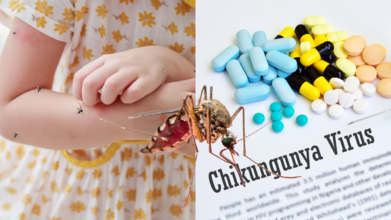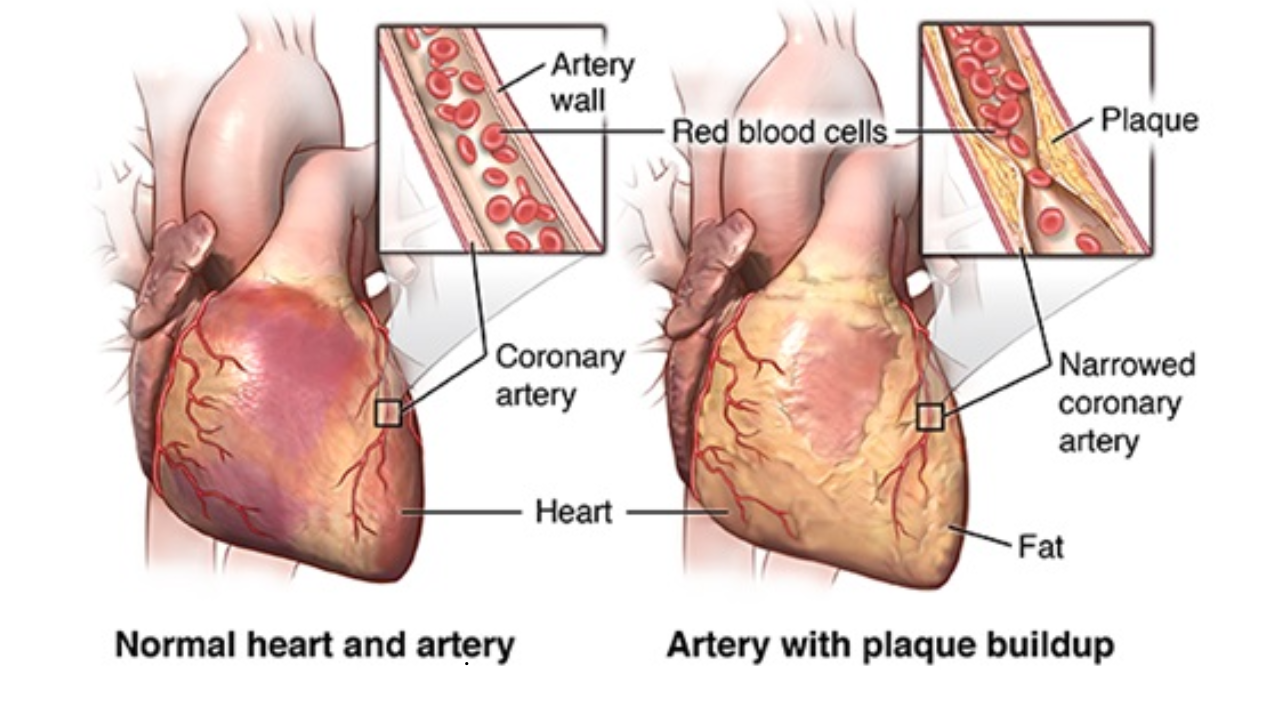- Health Conditions A-Z
- Health & Wellness
- Nutrition
- Fitness
- Health News
- Ayurveda
- Videos
- Medicine A-Z
- Parenting
- Web Stories
Over 53% Of Americans Now See Alcohol As Harmful Amid Rising Health Concerns

Credits: Health and me
Alcohol consumption in the United States has dropped to its lowest point in recorded history — and it’s not just because of shifting social trends. A growing body of research, changing public health advice, and generational attitudes are all fueling a nationwide reevaluation of drinking.
According to Gallup’s latest Consumption Habits survey, only 54% of American adults say they drink alcohol. That’s down from 58% in 2024, 62% in 2023, and below the previous record low of 55% in 1958. This decline is significant not just in percentage, but in cultural context — alcohol has been embedded in American social life for decades, from backyard barbecues to happy hours.
Interestingly, Gallup’s data suggests this drop isn’t being offset by other intoxicants like recreational cannabis, now legal in about half of U.S. states. Instead, it appears to be part of a deeper health-driven shift.
Why More Americans See Alcohol as a Health Risk?
For the first time since Gallup began asking the question in 2001, a majority of Americans — 53% — now believe that even moderate drinking is harmful. In 2015, that figure was just 28%. The change has been sharp, and it’s being driven largely by younger adults.
Among Americans aged 18 to 34, about two-thirds now believe that having “one or two drinks a day” carries health risks. Older adults are more cautious in their views only about half agree but that’s still a massive jump from the 20% who held this view a decade ago.
Part of the shift is fueled by stronger scientific consensus. In past decades, moderate alcohol consumption was often touted as beneficial for heart health- a belief rooted in flawed studies that couldn’t prove cause and effect. Now, research points to the opposite: alcohol increases the risk of at least seven cancers, contributes to liver disease, and has no safe consumption threshold.
Is The Pandemic Spike Behind The Decline?
It’s worth noting that the COVID-19 pandemic briefly reversed the downward drinking trend. During lockdowns, alcohol sales spiked and “quarantine cocktails” became a social media phenomenon. But once restrictions lifted, a correction began.
Inflation and higher interest rates have also played a role, making alcohol — particularly wine and spirits — more expensive. But public health messaging has been the stronger driver, with the U.S. Surgeon General earlier this year recommending warning labels on alcohol similar to those on cigarettes.
How Drinking Habits Are Changing?
It’s not only fewer people drinking — it’s also those who drink doing so less often.
Daily drinking is at a record low: Only 24% of drinkers had alcohol in the past 24 hours, the lowest in Gallup’s history.
Longer gaps between drinks: 40% of drinkers say it’s been more than a week since their last drink.
Lower overall intake: The average number of drinks per week has fallen to 2.8 — down from 3.8 last year and far from the 5.1 weekly drinks reported in 2003.
These numbers suggest that even people who haven’t sworn off alcohol entirely are moderating their intake more than ever.
Younger generations are leading the decline, and they’re doing so for different reasons than older Americans. Gen Z and younger millennials are generally more health-conscious, less tolerant of hangovers, and more open to “sober-curious” movements that normalize abstaining from alcohol in social settings.
Meanwhile, older Americans who may have lived through decades of conflicting health advice are slower to shift their beliefs, but still moving toward more cautious views.
As Lydia Saad, Gallup’s director of social research, notes, “Older folks may be a little more hardened to the whiplash of changing recommendations. Younger adults, on the other hand, are coming into adulthood already aware of alcohol’s risks.”
The U.S. isn’t alone in rethinking alcohol. Canada recently updated its guidelines to recommend no more than two drinks per week, citing cancer risk. The UK has lowered its safe drinking limit, and Australia has taken a similar approach. These changes reflect a growing international acknowledgment that alcohol, in any amount, carries health consequences.
This global trend is further reinforced by marketing shifts- non-alcoholic beer, wine, and spirits are now mainstream products, with sales growing far faster than their alcoholic counterparts.
If Americans continue to cut back, the shift could have meaningful health benefits. Lower alcohol consumption is linked to reduced rates of heart disease, liver damage, certain cancers, and accidents. However, experts caution that public health messaging must be clear and consistent past mixed signals have slowed behavioral change.
The U.S. federal government’s current guidelines still recommend up to two drinks per day for men and one for women, but those are under review. Health Secretary Robert F. Kennedy Jr. has hinted at “big changes” in upcoming recommendations.
While the decline in drinking may sound like a public health win, it’s not guaranteed to continue at the same pace. Social habits, economic pressures, and cultural attitudes can shift quickly as seen during the pandemic.
Still, the fact that over half of Americans now view moderate drinking as harmful marks a cultural tipping point. A behavior once considered benign, even beneficial, is now increasingly viewed as risky, much like smoking transitioned from socially accepted to widely discouraged.
For alcohol producers, hospitality businesses, and policymakers, this changing relationship with alcohol isn’t just a health trend, it’s an economic and cultural shift that will reshape how Americans celebrate, socialize, and define wellness for years to come.
The American relationship with alcohol is changing more dramatically than at any point in the past 80 years. The driving force isn’t prohibition or moralizing it’s science, awareness, and a generation less interested in raising a glass if it comes at a cost to their health.
XFG ‘Stratus’ COVID Now Dominant in US: States With Highest Cases and How to Spot Unique Symptoms

Credits: Canva
The XFG “Stratus” COVID-19 variant is officially strutting into the pandemic spotlight. It is new, it is bold, and according to the latest data from the Centres for Disease Control and Prevention (CDC), it is now the third most common variant in the US. But it is popping up in certain states more than others, and the way it announces its arrival could be by making your throat feel like you have swallowed a box of sandpaper.
While the national Covid-19 test positivity rate sits in the 5–9.9 per cent range, a dozen states are seeing significantly higher numbers.
According to CDC data, the states with the highest positivity rates are:
- New Mexico (12%)
- Texas (12%)
- Oklahoma (12%)
- Arkansas (12%)
- Louisiana (12%)
- Nevada (11.3%)
- Arizona (11.3%)
- California (11.3%)
- Alaska (11.1%)
- Washington (11.1%)
- Oregon (11.1%)
- Idaho (11.1%)
These states are not just reporting higher numbers but are also providing ideal conditions for Stratus to spread. With case trends officially “growing” according to the CDC, it is a situation that demands close attention.
Stratus is a variant under monitoring by the World Health Organisation (WHO). First detected in January, XFG Stratus now accounts for about 14 per cent of Covid cases in the US.
While theW says the health risk from Stratus remains low at a global level, this variant is still on a growth spurt, outpacing other circulating forms of the virus, including its sibling, the “Nimbus” NB.1.8.1 variant. The concerning bit is that the WHO says Stratus could be more adept at sidestepping immune defences. The reassuring bit is that the current vaccines are expected to continue protecting against symptomatic and severe disease caused by Stratus.
Spotting Unique Stratus Symptoms
The tricky thing about Stratus is that it is not trying to reinvent the Covid symptom wheel. According to experts, its symptoms look suspiciously similar to other recent Omicron descendants. But there is one possible stand-out, a sensation some patients are calling “razor blade throat”.
Here’s the full checklist:
- Sore throat (sometimes severe)
- Cough
- Congestion or runny nose
- Fever or chills
- Shortness of breath
- Loss of taste or smell
- Fatigue
- Headache
- Muscle aches
- Nausea, vomiting or diarrhoea
The “razor blade throat” description might sound too much, but anyone who has had that burning, scratchy pain knows it is no joke. Hoarseness has also been reported more often lately. Still, a sore throat has been a hallmark Covid symptom since the early days of the pandemic; Stratus just seems to be leaning into it.
Why the Positivity Spike Matters
Higher positivity rates do not just mean more people are testing positive; they can also signal under-testing. If more than 10 per cent of people tested are infected, it suggests many cases are flying under the radar, which means more opportunities for the virus to spread unchecked. That is especially risky when you have a variant with a knack for growing its share of cases quickly, like Stratus.
The fact that 12 states are sitting above the 11 per cent mark means public health teams will be watching these regions closely in the coming weeks. In the meantime, everyday precautions like masking in crowded places, testing if symptomatic, and staying up to date with vaccines remain the best tools in the toolbox.
Stratus vs. Nimbus
While Stratus is currently the one hogging headlines, it is not alone. The “Nimbus” NB.1.8.1 variant is still in the mix, though it is being outpaced by Stratus globally.
For now, Stratus is the one to watch and not because it is the most dangerous, but because it is the fastest climber.
Final Forecast
The XFG Stratus variant is not changing anything, but it is a reminder that the virus is still evolving and still finding ways to make itself known. Got a sudden sore throat that feels like sandpaper? Do not brush it off. Stratus may not be a storm you can see on a weather map, but it is definitely in the air.
UK Health Chiefs Warn of Rising Cases of Deadly Chikungunya Virus That Can Cause Body to ‘Fold In on Itself’

Credits: Canva
Health authorities in the UK have reported a significant rise in chikungunya cases, a mosquito-borne disease known for causing severe joint pain that can leave sufferers hunched over. Between January and June 2025, there were 73 confirmed cases in England, Wales, and Northern Ireland, more than double the 27 recorded during the same period in 2024. The UK Health Security Agency (UKHSA) says this is the highest number ever recorded, with nearly all linked to overseas travel.
What is Chikungunya?
Spread by the bite of infected Aedes mosquitoes, particularly the Aedes aegypti and Aedes albopictus species, chikungunya is not usually deadly but can be devastating for the very young, the elderly, or those with underlying health conditions.
Typical symptoms include:
- Excruciating joint pain that can leave sufferers bent over in agony
- High fever and headaches
- Muscle aches and swelling in the joints (especially hands and feet)
- Nausea, fatigue, and a rash that’s red, bumpy, and decidedly not Instagrammable
In severe cases, the arthritis-like pain can linger for months or even years, turning every movement into a reminder that mosquitoes are not just a mild holiday nuisance.
The majority of UK cases this year were linked to travel to Sri Lanka, India, and Mauritius. All were reported in England, with London taking the dubious honour of having the most cases. However, the two mosquito species that spread the virus are not established in the UK, so there is no risk of it transmitting locally.
UK logs first cases of oropouche virus
As if one virus was not enough, the UK has also logged its first cases of the oropouche virus, also dubbed ‘sloth fever’. This one circulates in the wild between primates, sloths, and birds before occasionally hopping over to humans via midges or mosquitoes.
Found primarily in the Amazon basin, oropouche has recently started wandering further across the Americas. All the UK cases were linked to travel from Brazil, so unless your staycation involves tree-dwelling mammals and tropical insects, you are safe for now.
The Global Bug Crawl
Chikungunya is typically found in Africa and southern Asia, but 2025 has seen it pop up in unexpected places. Outbreaks have been reported in China, the Indian Ocean islands of Reunion, Mayotte and Mauritius, and across the Americas. In southern China, more than 7,000 people have been infected since June, prompting COVID-style lockdowns in Foshan and at least a dozen other cities in Guangdong province. Hong Kong and Taiwan have also reported cases.
Health officials are urging travellers to take bite prevention seriously.
How to safeguard against mosquito bites
According to the US Centres for Disease Control and Prevention (CDC), your best defence is to stop mosquitoes from making contact in the first place.
Top tips include:
- Use Environmental Protection Agency (EPA)-registered insect repellent
- Wear long-sleeved shirts and trousers (mosquitoes can’t bite what they can’t reach)
- Treat clothing and gear with 0.5% permethrin for extra armour
- Choose accommodation with air conditioning or window screens
- If sleeping outdoors, use a mosquito net unless you enjoy sharing your bed with the local insect population
Vaccination
In addition to covering up and dousing yourself in repellent, some travellers may be advised to get the chikungunya vaccine before heading to certain destinations. Your healthcare provider can help you decide if this applies to your travel plans.
Why the Surge Now?
Several factors could be behind the sharp rise in cases. Increased international travel post-pandemic, changing weather patterns favouring mosquito breeding, and outbreaks in popular holiday destinations have created a perfect storm. Mosquitoes thrive in warm, wet conditions, and with climate change extending those conditions into more regions, these viruses are no longer staying politely within their old borders.
Chikungunya virus can turn a dream getaway into a painful endurance test, and once contracted, it is all about managing symptoms; there is no cure. The same goes for oropouche: prevention is your best friend. In the world of tropical diseases, an ounce of repellent really is worth a pound of cure.
Scott Swift, Taylor Swift's Dad Underwent A Quintuple Bypass Heart Surgery, Here's What We Know About It So Far

Credits: Treemily
Scott Swift, 73, pop singer Taylor Swift's dad just underwent a quintuple bypass surgery, revealed Taylor during one of the episodes of Travis Kelce and Jason Kelce's New Heights podcast.
She also shared that she had moved in with her dad earlier this year to take care of him for a speedy recovery. She noted that her father has been full of gratitude after the surgery. "He was the loveliest patient ever. He just kept saying thank you over and over again."
Why Did Scott Swift Need A Surgery?
Taylor called the surgery "really intense" and said that her dad's heart always had a healthy ECG or electrocardiogram. He also ensures to get it every year to remain a step ahead of any physical ailments. However, five hard blockages were found in his heart during a resting stress test.
"He's been telling all his friends, 'You need to get the stress test,' because that's what's actually preventative. If you can find that earlier, you don't have to have a bypass surgery," she said.
Taylor confirmed that her father is doing "incredibly well" and that his humor has helped him go through during the hard times. It still is very much intact in him.
She shares that he did not know how many blockages he's had, on being told that he underwent a quintuple bypass, which means five blockages, he also joked about it. "Well, you see, I come from a very competitive family," he told Taylor.
What Is A Stress Test?

As per the National Institute of Health (NIH), US, it is a form of physical test that typically utilizes electrocardiography along with blood pressure monitoring and exercise, which involves a treadmill or bicycle.
However, in a resting stress test, the assessment happens when the heart muscle is at rest after stress. This stress helps in identifying areas of reduced blood flow like ischemia or damage to the heart muscle, which can indicate conditions like coronary artery disease.
The test involves injecting a radioactive tracer into the bloodstream, then using a special camera to take images of the heart at rest and after stress.
What Is A Bypass Surgery?

As per Johns Hopkins Medicine, bypass surgery or coronary artery bypass graft surgery (CABG) is a procedure used to treat coronary artery disease. Coronary artery disease (CAD) is the narrowing of the coronary arteries. These are the blood vessels that supply oxygen and nutrients to the heart muscle. CAD is caused by a build-up of fatty material within the walls of the arteries. This buildup narrows the inside of the arteries, limiting the supply of oxygen-rich blood to the heart muscle.
How Does It Work?
One way to treat the blocked or narrowed arteries is to bypass the blocked portion of the coronary artery with a piece of a healthy blood vessel from elsewhere in your body. Blood vessels, or grafts, used for the bypass procedure may be pieces of a vein from your leg or an artery in your chest. An artery from your wrist may also be used.
ALSO READ: 4 Rare Heart Diseases That Are Becoming Common By Each Passing Day
This surgery is done to treat a blockage or narrowing of one or more of the coronary arteries. It can restore the blood supply to your heart muscle when nonsurgical procedures are not a choice.
More Updates From The Swift Family
In addition to Scott, Taylor shared that her mom Andrea Swift, too, under a procedure. “My mom just got a new knee,” Taylor shared. “She’s doing great. She’s scampering around. We’re not quite at scampering yet, but she’s doing great.”
She noted that her parents are her best friends.
"It was actually one of the most special things that's ever happened to me, spending all that time with them this summer. You have those long talks that you don't have when it's a small, concentrated period of time.”
© 2024 Bennett, Coleman & Company Limited

